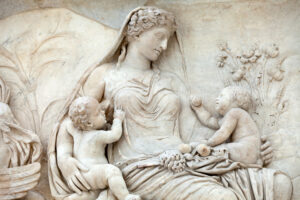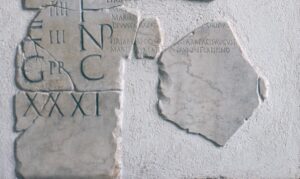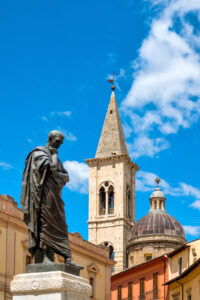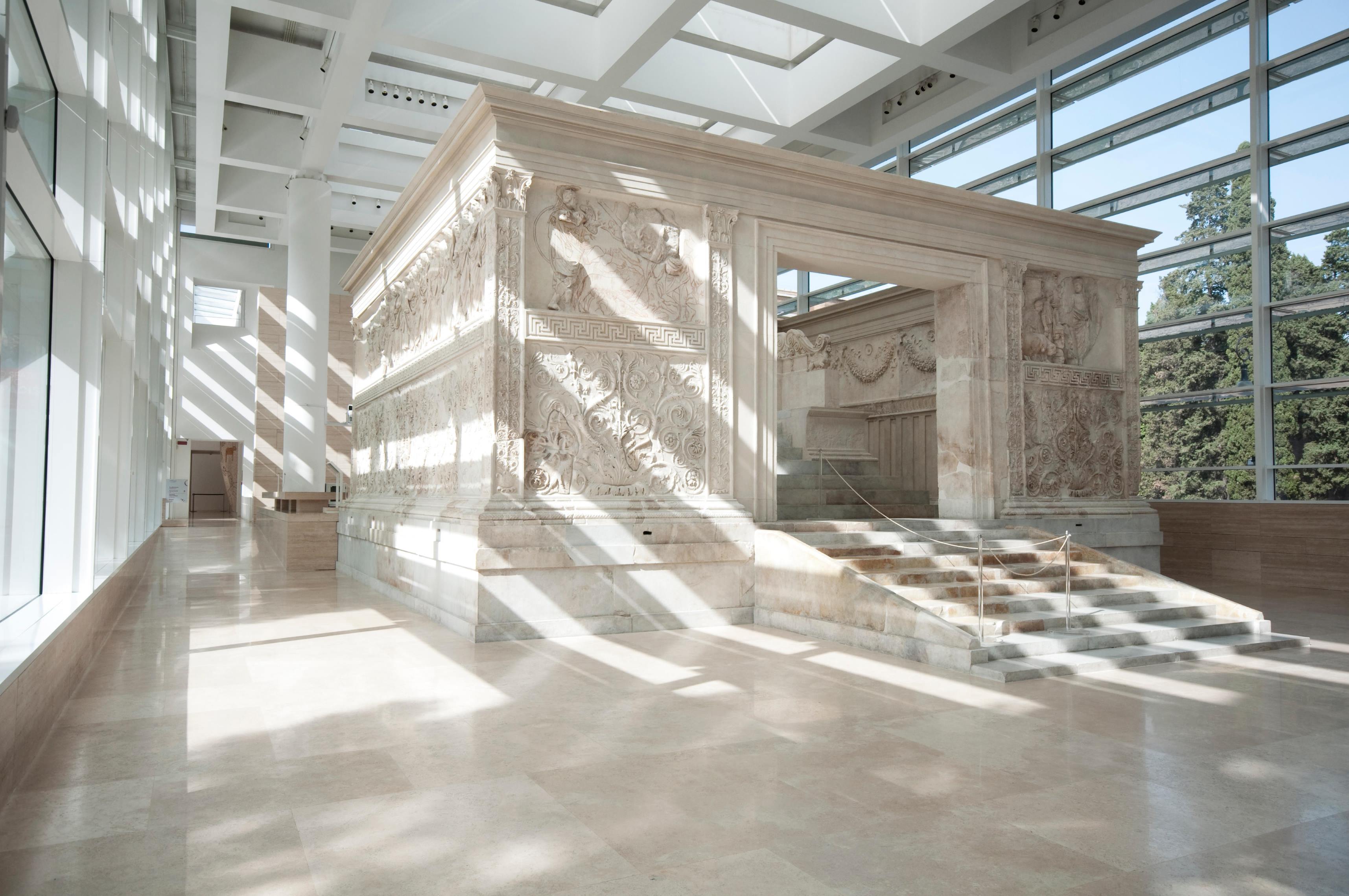 January 30, a date that marks the birthday of a millennial icon: theAra Pacis Augustae, the Roman monument that still enchants and inspires. Inaugurated back in 9 B.C., this architectural marvel is a tribute to the peace and prosperity of the Roman Empire under the reign of Augustus.
January 30, a date that marks the birthday of a millennial icon: theAra Pacis Augustae, the Roman monument that still enchants and inspires. Inaugurated back in 9 B.C., this architectural marvel is a tribute to the peace and prosperity of the Roman Empire under the reign of Augustus.
But the Ara Pacis, located in the heart of Rome beside the Tiber, is more than just a monument. It is a tangible symbol of the power and splendor of an era. Its magnificent friezes carved in high relief evoke celebrations, sacrifices and allegories of Peace, taking the visitor by the hand on a journey through time.
Looking at the monument more closely, above the crowning of the Ara Pacis, adorned with spirals supported by winged lions, one can distinguish a frieze that completely surrounds the monument, both inside and out. This depiction is of significant importance, as it goes beyond quotations and sources: it represents the sacrificial ritual that, every January 30, during the festivities, took place on top of the Ara Pacis. The Vestal Virgins and Pontifex Maximus are distinguished on the inside, while the external relief features the victim priests, their assistants known as “camilli,” and the animals destined for sacrifice.

The holiday was celebrated annually on January 30 in honor of Pax, the Goddess of Peace. This date was also considered sacred because of its connection with the birthday of Livia, the chaste consort of Augustus, who was also esteemed by the Senate for her morally exemplary conduct. The construction of the Ara Pacis took place “by decree of the Senate” in 13 B.C. on the occasion of Octavian Augustus’ return from his campaign in Spain and Gaul and was dedicated in 9 B.C. on the Campus Martius. This is recorded in the calendar of the Fasti Praenestini, now on view in the collection of the National Roman Museum at the Palazzo Massimo in the Baths.
Ovid, the poet originally from Sulmona, also celebrates the Ara Pacis in his “Fasti.” Indeed, the first book of the work concludes with a brief invocation to Peace and a praise of the house of Augustus, which was the promoter of peace:
 And behold, our song has led us to the Altar of Peace: / There are two days to go before the end of the month. / Here is Peace, with the laurel of Actium on her gathered hair. / Come, O Peace, and over all the world spread thy sweetness. / If there are no more enemies, even triumphs come to lack: / But thou shalt give our princes greater glory than that won in war. / Let the soldier hold arms only to defend himself against other arms! / Let the fearful sound of the trumpet resound only at feasts; / To the ends of the earth the name of the Aeneads must strike fear: / If there be a people who have no fear of Rome, learn to love her! / Cast incense, priests, on the altar of Peace! / Let the white victim fall, with forehead wet with lustral water! / And the House of the prince who gives us peace with it endure for ever: / For this let your pious prayers be raised to the benevolent gods.
And behold, our song has led us to the Altar of Peace: / There are two days to go before the end of the month. / Here is Peace, with the laurel of Actium on her gathered hair. / Come, O Peace, and over all the world spread thy sweetness. / If there are no more enemies, even triumphs come to lack: / But thou shalt give our princes greater glory than that won in war. / Let the soldier hold arms only to defend himself against other arms! / Let the fearful sound of the trumpet resound only at feasts; / To the ends of the earth the name of the Aeneads must strike fear: / If there be a people who have no fear of Rome, learn to love her! / Cast incense, priests, on the altar of Peace! / Let the white victim fall, with forehead wet with lustral water! / And the House of the prince who gives us peace with it endure for ever: / For this let your pious prayers be raised to the benevolent gods.
Today, more than two millennia after its consecration, the Ara Pacis continues to inspire wonder and admiration. Visiting the Ara Pacis is not only a cultural experience, but also an artistic journey through the ages thanks to the numerous exhibition itineraries organized by the museum of the same name established in 1938 and renovated in 2012.
Two exhibitions will be experienced in the beautiful halls of the historic site until March 10, 2024. Helmut Newton. Legacy , the exhibition dedicated to one of the most beloved photographers of all time with more than 200 shots of which 80 are on display for the first time in this exhibition, and Light, Memory, Appearances, the Ara Pacis interpreted by Seven students from the Academy of Fine Arts in Rome.








